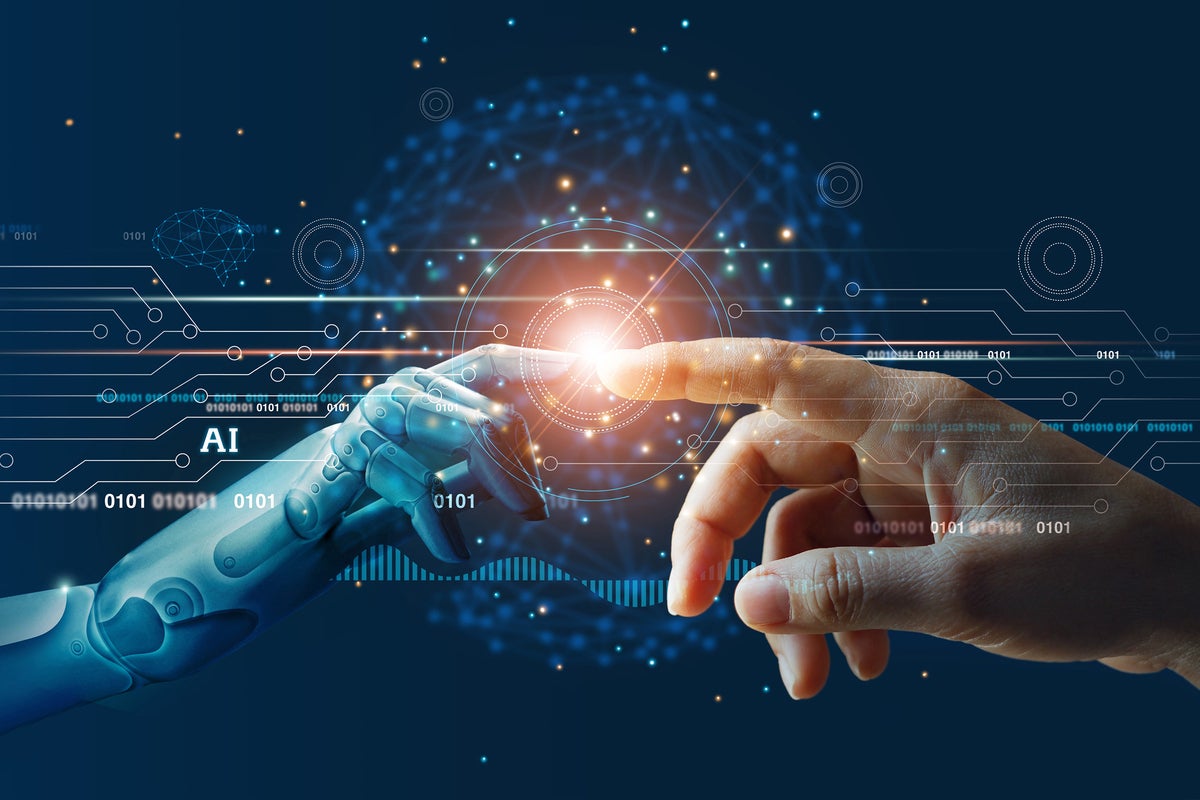The real risk of AI in network operations

One who tried generative AI technology on their own historical network data said
that it suggested a configuration change that, had it been made, would have
broken the entire network. “The results were wrong a quarter of the time, and
very wrong maybe an eighth of the time,” the operations manager said. “I can’t
act on that kind of accuracy.” ... That raises my second point about a lack of
detail on how AI reached a conclusion. I’ve had generative AI give me wrong
answers that I recognized because they were illogical, but suppose you didn’t
have a benchmark result to test against? If you understood how the conclusion
was reached, you’d have a chance of picking out a problem. Users told me that
this would be essential if they were to consider generative AI a useful tool.
They don’t think, nor do I, that the current generative AI state of the art is
there yet. What about the other, non-generative, AI models? There are well over
two dozen operations toolkits out there that claim AI or AI/ML capability. Users
are more positive on these, largely because they have a limited scope of action
and leave a trail of decision-making steps that can be checked quickly.
Exploring an Agilist's Story of Perseverance
“There are a few things in technology that help people with MS because they have
the same problem with speech, but they’re not really effective for me,” because
you still have to go back and edit everything. If you are living with ataxia,
“there is a group called the National Ataxia Foundation. It is a great support
group; you don’t feel like you are going through this alone. They post things
about technology and tools you can use,” Apuroopa said. She also recommends
utilizing your HR resources if you have any need for accommodation. An
accommodation request form may be the right way to access technology or request
an adjustment or change in your work environment or duties based on a medical
condition. Apuroopa’s employer offers a work-from-home option. “The remote
environment adds complexity,” she said, because not everyone is willing to turn
their cameras on for various reasons, and you end up missing that facial
connection and body language, but she’s also thankful for the option to stay
home.
A critical cybersecurity backup plan that too many companies are ignoring

With a departure of a CISO, there is a loss of valuable institutional knowledge,
which can impede an organization’s ability to adapt to rapidly evolving cyber
threats, said Daniel Soo, risk and financial advisory principal in cyber and
strategic risk at consulting firm Deloitte. “The lack of a successor could
disrupt business-as-usual cybersecurity operations, resulting in delays, gaps in
critical cyber risk management activities, and hindered cyber incident response
and decision-making,” Soo said. In addition, CISO succession planning is key to
ensuring that an organization has the right person at the right time to help
drive the organization’s cyber objectives, Soo said. ... CISO succession
planning should also involve anticipating future security requirements by
considering the evolving nature of the business and technology landscape. “CISOs
should analyze the security implications of these trends and develop policies,
technologies, and skills to address future needs,” he said. “Implementing a
training program can help ensure that employees are equipped with the necessary
skills to tackle upcoming security challenges.”
Bridging the cybersecurity skills gap through cyber range training
Cyber ranges take traditional cyber training and turn it into real-life,
experiential learning so learners can actually apply their knowledge and skills
and gain real experience using a simulation method. SOC analysts, who are the
last line of defense, need to continually engage in these simulations to
strengthen their capabilities and create “muscle memory.” An ongoing cyber range
training program with real-life attacks enhances their preparedness as
individuals and as a cohesive team through immersive experiences. One thing to
note is that not all cyber ranges are equal to each other. They can vary in
terms of their purpose, complexity, and available features, tools, and
technology. To ensure your team is getting the most effective training, it’s
critical to use a dynamic range with live-fire attacks that the whole team can
participate in together, versus more of a directed lab environment or individual
exercises that team members do in parallel.
Why cyber security should be part of your ESG strategy

In fact, the investment community has been singling out cyber security as one
of the major risks that ESG programmes will need to address due to the
potential financial losses, reputational damage and business continuity risks
posed by a growing number of cyber attacks and data breaches. Investment firm
Nomura already takes into account an investee firm’s cyber security
performance in its credit ESG scoring model, while KPMG noted in its report
that cyber security is not only applicable to the governance aspects of ESG,
but also has social and environmental implications. ... “That trust you want
to build from a social standpoint comes from sound cyber security practices,
so you can tell customers you’re taking the right steps to protect their
identity and financial information,” he added. But even after organisations
have identified aspects of their businesses that are at risk, building up
their risk profile remains challenging as they are often unaware of what
technology assets they have, coupled with the lack of efforts to assess
technical risks, Wenzler said.
Boost your tech ROI with Engineering Effectiveness
Learnings from numerous agile, DevOps, and platform transformation projects
have shown that the productivity of engineering teams in most organizations is
around 30 percent of their total potential. Therefore, a whopping 70 percent
improvement is possible, even necessary if you want to keep up with
digital-native competitors. You can achieve this by investing in both
technology and the development teams themselves. Create an environment
equipped with the right platforms, methodologies, and workplace culture that
makes teams more productive and helps them collaborate more efficiently. It's
also vital to give developers the opportunity and resources to keep their
skills up to date. ... The path to modernization is not only about allocating
more resources, but fundamentally about transforming business processes and
culture. Talent is better utilized when outdated and inefficient workflows are
revised. A critical look at the organization, involving senior management, is
essential to uncover all bottlenecks. Changing traditional work and thought
patterns can be challenging. In such cases, external assistance coupled with
tried-and-tested frameworks and tools can be of help.
Social Intelligence Is the Next Big Step for AI

When it comes to being able to decipher nonverbal cues like body language or
facial expressions, AI still lacks many of the social skills that many of us
humans take for granted. To help AI develop those social skills, new work from
Chinese researchers suggests that a multidisciplinary approach will be needed
— such as adapting what we know about cognitive science, and using
computational modeling would help us better identify the disparities between
the social intelligence of machine learning models and their human
counterparts. “[Artificial social intelligence or ASI] is distinct and
challenging compared to our physical understanding of the work; it is highly
context-dependent,” said first author Lifeng Fan of the Beijing Institute for
General Artificial Intelligence (BIGAI) in a statement. “Here, context could
be as large as culture and common sense, or as little as two friends’ shared
experience. This unique challenge prohibits standard algorithms from tackling
ASI problems in real-world environments, which are frequently complex,
ambiguous, dynamic, stochastic, partially observable and multi-agent.”
Why Ambient Computing May Be the Next Big Trend

Ambient computing will become an everyday reality through the widespread
adoption of connected devices, the Internet of Things (IoT), and advancements
in artificial intelligence, Bilay predicts. “As these technologies become more
sophisticated, affordable, and seamlessly integrated into our environments,
ambient computing will permeate our homes, workplaces, and public spaces.” ...
Bilay says users will need to remain vigilant about data protection. He
cautions that ambient computing’s reliance on interconnected systems creates
dependencies that could make users susceptible to service disruptions caused
by technical failures or compatibility issues. Security is another major
concern. “We’ve already seen cases in which an estranged spouse uses the smart
thermostat or smart lighting to harass their ex,” Loukides says. When devices
are networked, attacks could occur at a larger and more devastating scale.
“We’re already familiar with ransomware,” he notes. “Could somebody extort a
vendor like Honeywell or Nest because they’ve taken control over all the
thermostats?”
Has generative AI quietly ushered in a new era of shadow IT on steroids?

There are dozens of great studies showing the dangers that come with shadow
IT. A few of the concerns include decreased control over sensitive data, an
increased attack surface, risk of data loss, compliance issues, and
inefficient data analysis. Yes, there are many other security, privacy, and
legal issues that can surface with shadow IT. But what concerns me the most is
the astonishing growth in generative AI apps -- along with how fast these apps
are being adopted for a myriad of reasons. Indeed, if the internet can best be
described as an accelerator for both good and evil -- which I believe is true
-- generative AI is supercharging that acceleration in both directions. Many
are saying that the adoption of generative AI apps is best compared to the
early days of the internet, with the potential for unparalleled global growth.
... If you're questioning whether generative AI apps qualify as shadow IT, as
always it depends on your situation. If the application is appropriately
licensed and all the data stays within the confines of your organization's
secure control, generative AI can fit neatly into your enterprise portfolio of
authorized apps.
What Is a Modern Developer?
The desire to simplify one's life, automate everything, and solve problems is
the key thing that drives many modern developers. If this desire sounds
familiar, then you are a developer. In the near future, you may only need to
think of what the code should be and then you can write it out in sentences —
aka a prompt engineer. This is coming so quickly that this future could be
Tuesday. The heterogeneous nature of data, data producers, applications, and
services that drives everyone to be a developer also highlights the importance
of developers. We need to build applications and other things since there
are so many diverse applications and systems that need to be joined together
to solve an entire real-world requirement. ... The number of activities a
developer has to do in modern development today goes beyond just designing,
creating, building, testing, and deploying applications. Often in today’s
resource-constrained environments, a common additional role is to gather and
translate user requirements into buildable assets. Responsibilities also
include internationalization, monitoring, managing, extracting data, and
more.
Quote for the day:
“When people are financially invested,
they wanta return. When people are emotionally invested, they want to
contribute.” -- Simon Sinek
No comments:
Post a Comment